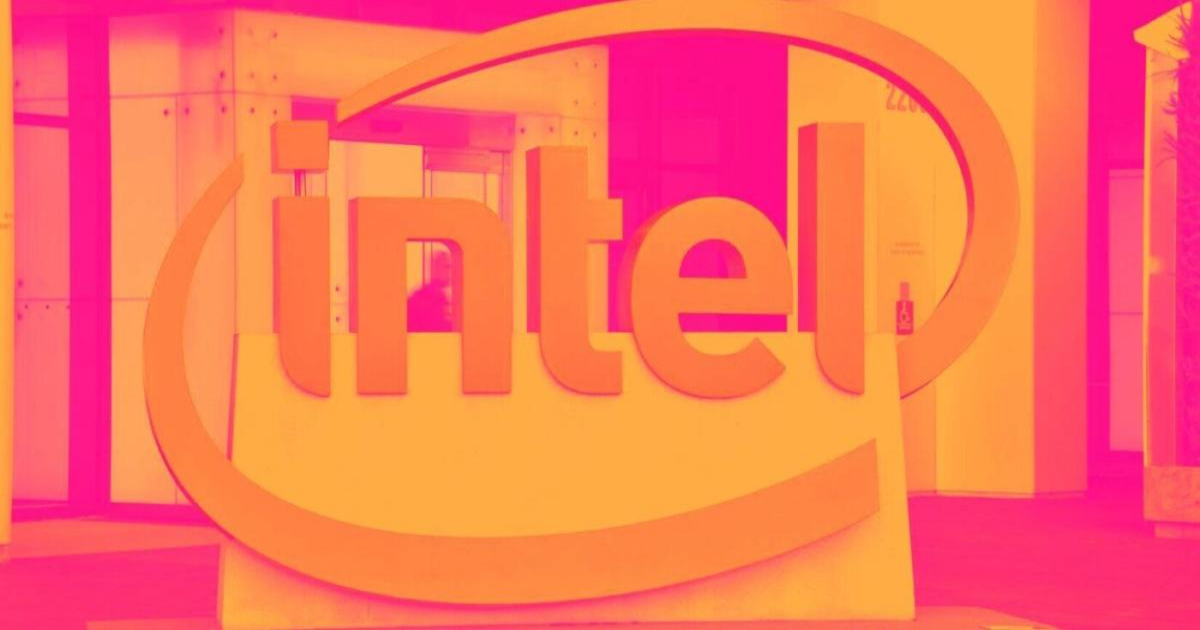Computer processor maker Intel (NASDAQ:INTC) reported Q1 CY2025 results beating Wall Street’s revenue expectations , but sales were flat year on year at $12.67 billion. On the other hand, next quarter’s revenue guidance of $11.8 billion was less impressive, coming in 8.4% below analysts’ estimates. Its non-GAAP profit of $0.13 per share was significantly above analysts’ consensus estimates.
Is now the time to buy Intel? Find out in our full research report.
- Revenue: $12.67 billion vs analyst estimates of $12.34 billion (flat year on year, 2.6% beat)
- Adjusted EPS: $0.13 vs analyst estimates of $0 (significant beat)
- Adjusted Operating Income: $690 million vs analyst estimates of -$21.67 million (5.4% margin, significant beat)
- Revenue Guidance for Q2 CY2025 is $11.8 billion at the midpoint, below analyst estimates of $12.88 billion
- Adjusted EPS guidance for Q2 CY2025 is $0 at the midpoint, below analyst estimates of $0.06
- Operating Margin: -2.4%, up from -8.4% in the same quarter last year
- Free Cash Flow was -$3.68 billion compared to -$6.18 billion in the same quarter last year
- Inventory Days Outstanding: 140, up from 94 in the previous quarter
- Market Capitalization: $89.78 billion
“The first quarter was a step in the right direction, but there are no quick fixes as we work to get back on a path to gaining market share and driving sustainable growth,” said Lip-Bu Tan, Intel CEO.
Inventor of the x86 processor that powered decades of technological innovation in PCs, data centers, and numerous other markets, Intel (NASDAQ:INTC) is a leading manufacturer of computer processors and graphics chips.
The biggest demand drivers for processors (CPUs) and graphics chips at the moment are secular trends related to 5G and Internet of Things, autonomous driving, and high performance computing in the data center space, specifically around AI and machine learning. Like all semiconductor companies, digital chip makers exhibit a degree of cyclicality, driven by supply and demand imbalances and exposure to PC and Smartphone product cycles.
Reviewing a company’s long-term sales performance reveals insights into its quality. Any business can put up a good quarter or two, but many enduring ones grow for years. Intel struggled to consistently generate demand over the last five years as its sales dropped at a 6.9% annual rate. This was below our standards and suggests it’s a low quality business. Semiconductors are a cyclical industry, and long-term investors should be prepared for periods of high growth followed by periods of revenue contractions.
Intel Quarterly Revenue
Long-term growth is the most important, but short-term results matter for semiconductors because the rapid pace of technological innovation (Moore’s Law) could make yesterday’s hit product obsolete today. Intel’s annualized revenue declines of 3% over the last two years suggest its demand continued shrinking.
Intel Year-On-Year Revenue Growth
This quarter, Intel’s $12.67 billion of revenue was flat year on year but beat Wall Street’s estimates by 2.6%. Adding to the positive news, Intel’s flat sales marked an inflection from its revenue decline last quarter, news that will likely give some shareholders hope. Company management is currently guiding for a 8% year-on-year decline in sales next quarter.
Looking further ahead, sell-side analysts expect revenue to grow 1.9% over the next 12 months. While this projection suggests its newer products and services will fuel better top-line performance, it is still below the sector average.
Here at StockStory, we certainly understand the potential of thematic investing. Diverse winners from Microsoft (MSFT) to Alphabet (GOOG), Coca-Cola (KO) to Monster Beverage (MNST) could all have been identified as promising growth stories with a megatrend driving the growth. So, in that spirit, we’ve identified a relatively under-the-radar profitable growth stock benefiting from the rise of AI, available to you FREE via this link.
Days Inventory Outstanding (DIO) is an important metric for chipmakers, as it reflects a business’ capital intensity and the cyclical nature of semiconductor supply and demand. In a tight supply environment, inventories tend to be stable, allowing chipmakers to exert pricing power. Steadily increasing DIO can be a warning sign that demand is weak, and if inventories continue to rise, the company may have to downsize production.
This quarter, Intel’s DIO came in at 140, which is 22 days above its five-year average, suggesting that the company’s inventory has grown to higher levels than we’ve seen in the past.
Intel Inventory Days Outstanding
We were impressed by how significantly Intel blew past analysts’ EPS and adjusted operating income expectations this quarter. On the other hand, its revenue and EPS guidance for next quarter missed significantly and its inventory levels increased. Overall, this quarter was mixed. The market seemed to focus on the negatives, and the stock traded down 5% to $20.40 immediately following the results.
Is Intel an attractive investment opportunity right now? What happened in the latest quarter matters, but not as much as longer-term business quality and valuation, when deciding whether to invest in this stock. We cover that in our actionable full research report which you can read here, it’s free.
